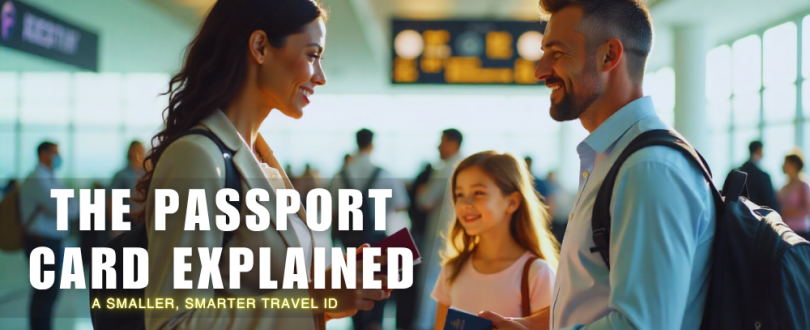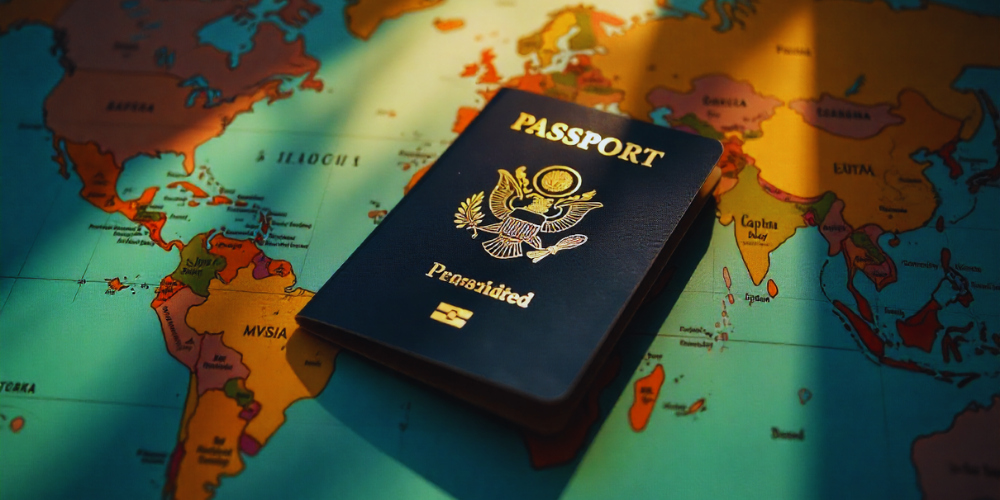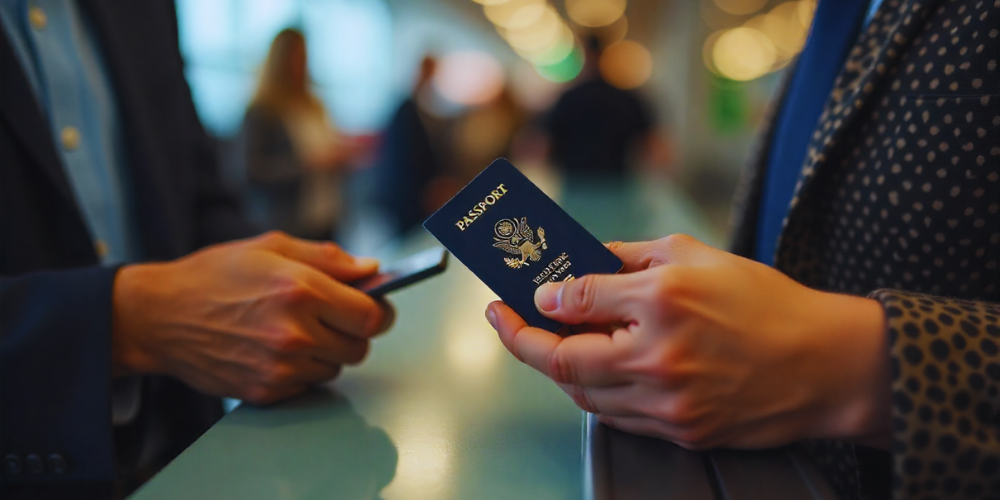
In an era where even your phone can double as a boarding pass, many U.S. travelers are beginning to wonder: Do I really need to carry around a bulky passport book every time I cross a border? Enter the passport card—an increasingly popular alternative for people who want something slimmer, cheaper, and easier to manage.
At its simplest, the passport card is a wallet-sized, plastic identification document issued by the U.S. government. Like its big sibling, the passport book, it proves both your identity and your citizenship. But unlike the traditional booklet, the card slides neatly into your wallet next to your driver’s license and credit cards.
This raises the inevitable question: What’s the point of a passport card compared to the traditional passport book? Is it just a glorified ID, or a genuinely useful travel tool? Let’s break it down.
What is a Passport Card?
Think of the passport card as the minimalist cousin of the classic passport book. Instead of a stitched booklet with dozens of blank visa pages, the card is a durable, plastic rectangle about the size of a credit card. On its face: your photo, personal details, and security features designed to prevent forgery. Embedded within it: an RFID chip that speeds up processing at certain land and sea entry points.
The U.S. Department of State is the authority behind this sleek travel document, offering it as official proof of both identity and U.S. citizenship. Its purpose is straightforward: to give Americans a more portable, affordable, and convenient option for specific types of travel and federal identification.
At its core, the passport card isn’t designed to replace the traditional passport book but to complement it. Where the book is global, the card is practical—ideal for regional travel and everyday use as a secure government-issued ID.

How a Passport Card is Used
The passport card is designed with a very specific travel profile in mind. It’s not for the jet-setter chasing stamps across continents, but for the practical traveler who needs quick, routine access across U.S. borders by land or sea.
With a passport card, you can:
– Drive into Canada or Mexico without fumbling for a bulky passport book.
– Board a cruise to Bermuda or the Caribbean, where the card is accepted just as smoothly as the book.
– Re-enter the United States at designated land crossings and seaports with far less hassle.
But here’s the catch: if you’re planning to fly internationally—even just a quick hop to Toronto or Cancun—the passport card won’t cut it. It’s not valid for air travel outside the United States. For that, the traditional passport book remains non-negotiable.
In other words, the card is a specialist, not a generalist: perfect for regional trips, but powerless the moment you step into an airport check-in line for an overseas flight.
Benefits of a Passport Card
The passport card may not take you everywhere, but where it does work, it shines. Here’s why more and more travelers see it as a smart addition to their travel toolkit:
Portability & Convenience
Unlike the passport book, the card doesn’t demand a dedicated pocket or protective sleeve. It’s wallet-sized, made of durable plastic, and resistant to the wear-and-tear of daily life.
Speed & Efficiency
Thanks to its embedded RFID chip, the card allows faster processing at land borders and seaports. Translation: less time in line, more time at your destination.
Affordability
A passport card costs a fraction of what a passport book does. Application and renewal fees are lower, making it a cost-effective option for those who don’t need the full travel privileges of the book.
Identity & Compliance
Beyond travel, the card doubles as a Real ID-compliant identification document, valid for federal purposes, domestic flights within the U.S., and secure ID checks. For many, it’s a sturdier alternative to a driver’s license.
Lifestyle Relevance
If you live near the Canadian or Mexican border, or you’re a cruise enthusiast, the passport card is tailor-made for you. It’s the sweet spot between practicality and legality—a low-maintenance, high-utility document for travelers who stay within the region.
Limitations of a Passport Card
As practical as the passport card is, it comes with some very clear boundaries. Think of it less as a universal key and more as a regional pass.
No International Air Travel
This is the card’s biggest drawback. If your plans involve flying abroad—whether it’s Paris, Tokyo, or even just Toronto—you’ll still need a full passport book. The card simply doesn’t meet international air travel requirements.
Restricted to Specific Countries by Land and Sea
The card is valid only for re-entry to the U.S. from Canada, Mexico, Bermuda, and certain Caribbean nations—and only when you travel by land or sea. Step outside that limited geography, and you’ll be reaching for your passport book again.
A Complement, Not a Replacement
The passport card is designed to supplement, not supplant, the traditional book. For most travelers, it works best as a secondary travel document—a convenient backup for short trips, but not a ticket to global mobility.

Who Should Get a Passport Card?
So, who actually benefits from carrying one of these wallet-sized travel documents? The passport card isn’t for everyone, but for the right traveler, it’s a game-changer.
Frequent Border Crossers
If you regularly commute between the U.S. and Canada or Mexico—whether for work, family, or leisure—the card is tailor-made for you. It’s quick, portable, and speeds up crossings.
Cruise Enthusiasts
For those who love hopping between Caribbean islands or setting sail to Bermuda, the card is often all you need. No bulky passport book required.
Cost-Conscious Travelers
At a fraction of the price of a passport book, the card is an affordable solution for people who don’t need full international access.
People Seeking an Extra Form of ID
The passport card doubles as a federally recognized, Real ID-compliant identification. For anyone who wants an extra layer of identity security—or a sturdy government-issued backup to their driver’s license—it’s a smart choice.
Passport Card vs. Passport Book
While the passport card and the passport book share the same official weight in proving U.S. citizenship and identity, they live in very different leagues.
Function & Reach
The passport book is your all-access pass: valid for international air, land, and sea travel anywhere in the world. The passport card, by contrast, is a specialist tool: accepted only at land and sea borders for a handful of nearby destinations.
When You Need the Book
If you plan to fly internationally—or travel beyond North America, Bermuda, or the Caribbean—you’ll need the book. There’s simply no workaround.
When the Card Suffices
For road trips to Canada, quick hops into Mexico, or Caribbean cruises, the card is all you need. It’s compact, practical, and speeds up border checks with its RFID chip.
Why Many Travelers Keep Both
Plenty of Americans apply for both documents—the book for global travel, and the card for convenience and as a sturdy backup form of ID. Together, they cover every scenario, from a weekend cruise to a long-haul flight to Europe.
Summary / Final Takeaway
At its heart, the passport card is a strategic travel and identity solution: compact, cost-effective, and perfectly tailored for land and sea crossings close to home. It’s also a robust, Real ID-compliant credential that slips neatly into your wallet and makes border travel less of a headache.
But here’s the bottom line: the passport card is not a substitute for international air travel. If you’re planning a trip that involves flying overseas, the passport book is non-negotiable.
For many Americans, the smartest move is to look at their travel habits. If your lifestyle revolves around border crossings, cruises, or simply needing an extra government-issued ID, the passport card is well worth it. If you’re a global wanderer, think of it as a convenient sidekick to your passport book—not its replacement.
Frequently Asked Questions (FAQ)
1. Can I use a passport card to fly internationally?
No. The passport card is not valid for international air travel. It can only be used for land and sea travel to Canada, Mexico, Bermuda, and certain Caribbean nations.
2. Is the passport card Real ID compliant?
Yes. The passport card is a Real ID-compliant identification document, which means it can be used for domestic flights within the U.S. and for access to federal facilities.
3. How much does a passport card cost compared to a passport book?
The passport card is significantly cheaper. Application and renewal fees are lower than those of the passport book, making it a budget-friendly option for regional travelers.
4. Can I use a passport card as my only form of ID?
Yes, the passport card is a valid government-issued ID. Many people use it as a backup to their driver’s license or state ID, especially since it’s more durable and federally recognized.
5. Who benefits most from having a passport card?
The passport card is ideal for frequent border crossers (Canada/Mexico), cruise travelers, cost-conscious applicants, and anyone looking for a secure secondary form of ID.

